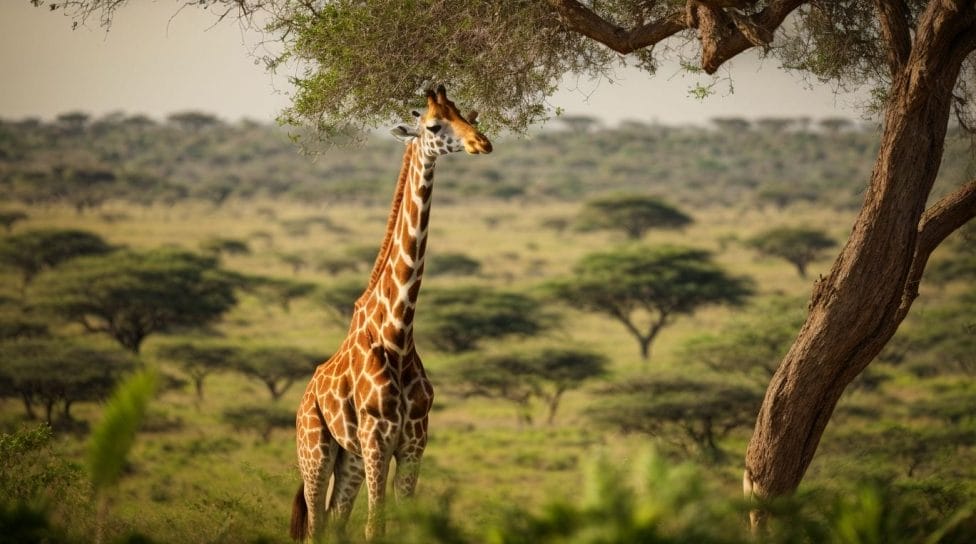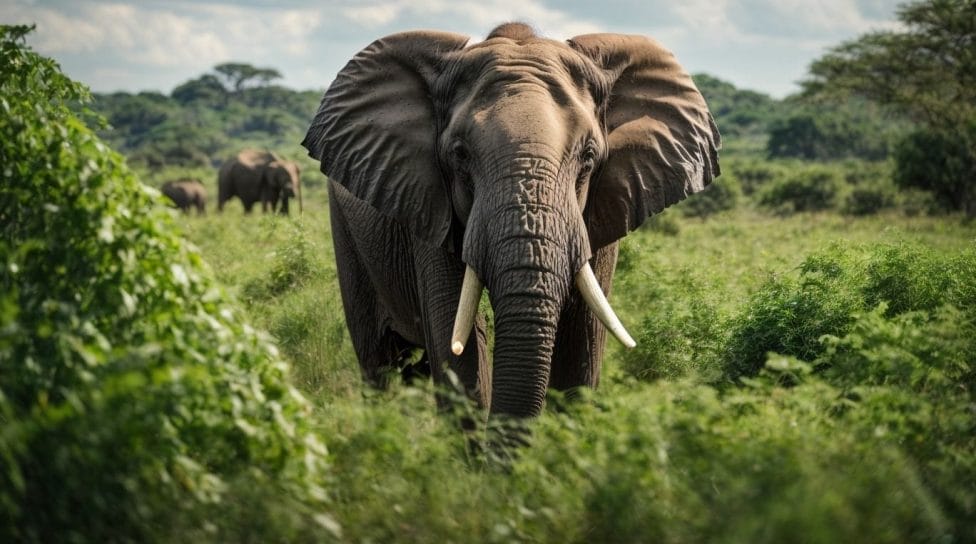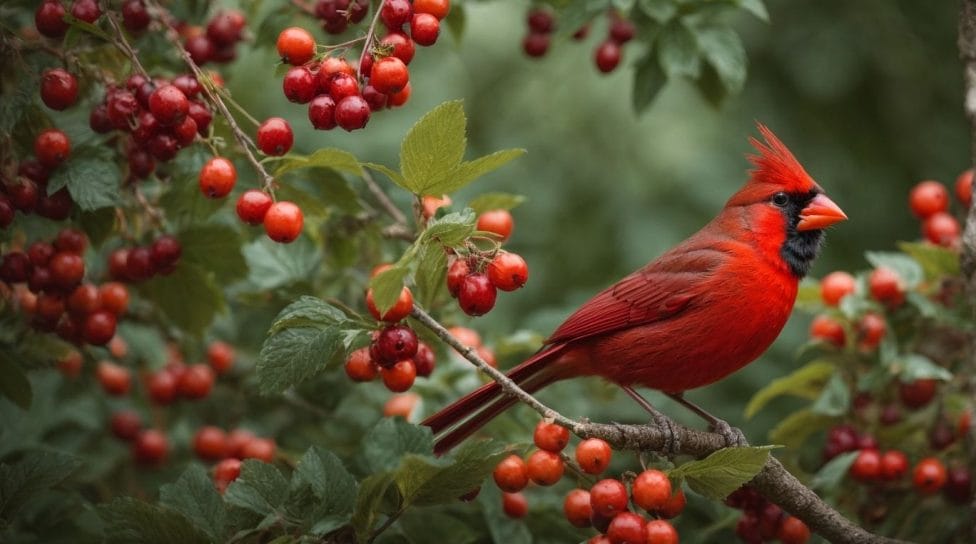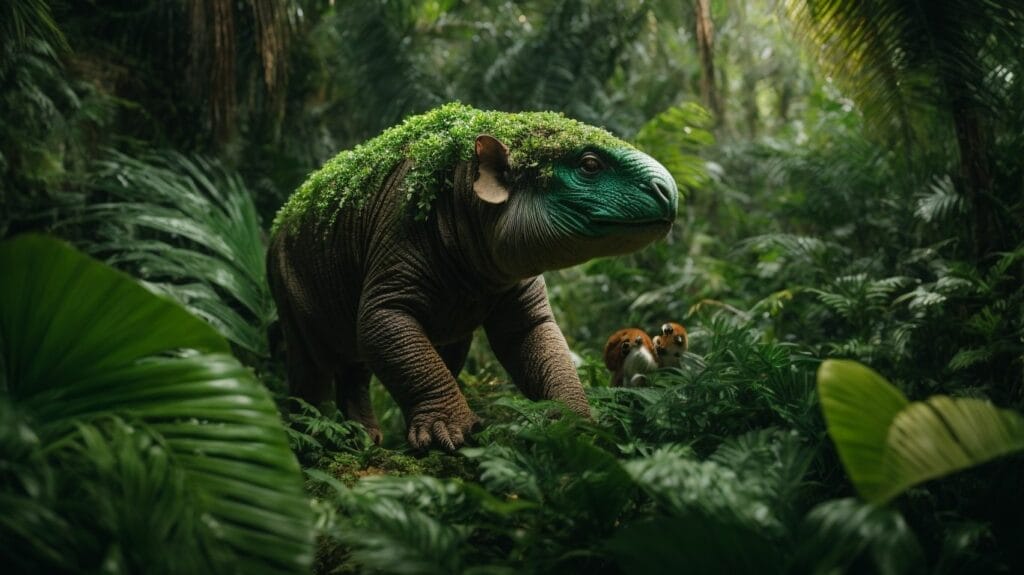Animals eating plants, also known as herbivores, play a crucial role in the ecosystem as they consume plant material for sustenance. These herbivorous creatures can be found in various groups and species, each with unique dietary preferences. Understanding what animals eat plants can provide insights into the interdependence and balance of the natural world.
Herbivorous animals can be classified into different types based on their dietary habits. Mammals are one such group that includes notable herbivores such as giraffes, elephants, and rabbits. Giraffes have long necks and use their height to feed on leaves from tall trees, while elephants rely on their immense size to consume vegetation like grasses and branches. For rabbits, their diet primarily consists of grasses, herbs, and vegetables.
Another group of animals that consume plants is reptiles. Tortoises and turtles are herbivorous reptiles that feed on various plants, including grasses, leaves, and flowers. Similarly, iguanas, with their unique teeth and specialized digestive systems, have a plant-based diet consisting mainly of leaves, fruits, and flowers.
Birds also play a significant role in plant consumption. Pigeons feed on grains, seeds, and fruits, while parrots have a diverse diet of fruits, nuts, seeds, and flowers.
Insects, too, can be herbivorous, with caterpillars consuming leaves and bees relying on nectar from flowers as their main food source.
Understanding the dietary preferences of animals that eat plants provides insights into the delicate balance of the ecosystem and the importance of plant life. By studying these herbivorous creatures, we can gain a better understanding of the intricate web of life and the interconnectedness that exists in nature.
Key Takeaways:
- Herbivorous animals consume plants as their main source of food: These animals, including giraffes, elephants, rabbits, tortoises, turtles, iguanas, pigeons, parrots, caterpillars, and bees, have adapted to feed on various plant materials to meet their nutritional needs.
- Herbivores play a crucial role in the ecosystem: By eating plants, herbivorous animals help control plant populations, disperse seeds, and maintain a balance in the food web. Their feeding habits contribute to the diversity and stability of ecosystems.
- The types of plants consumed by herbivores vary: Herbivorous animals have different dietary preferences, with some specializing in grasses, leaves, fruits, or seeds, while others consume a wide range of plant materials. This diversity of diets is essential for overall ecosystem health.
Herbivorous Animals

Photo Credits: Petnarnia.Com by Russell Gonzalez
Discover the fascinating world of herbivorous animals, where animals solely rely on plants for their nourishment. Delve into the varied and intriguing types of herbivores as we explore their dietary choices and feeding habits. Uncover the surprising diversity within this animal group and gain insights into how these creatures adapt to their plant-based diets. Prepare to be amazed by the incredible strategies and adaptations that allow these herbivores to thrive in their natural habitats.
Types of Herbivores
Herbivores can be classified into different types. These include mammals, reptiles, birds, and insects. Let’s take a look at some common examples:
1. Mammals:
– Giraffes: These majestic animals possess long necks that enable them to reach leaves situated high up in trees.
– Elephants: These giant creatures consume a significant amount of plant material, including grass, leaves, and bark.
– Rabbits: With a specialized digestive system, rabbits efficiently process plant-based diets.
2. Reptiles:
– Tortoises and Turtles: These reptiles predominantly feed on plant matter such as grasses, leaves, and fruits.
– Iguanas: Known for their herbivorous diets, iguanas mainly eat leaves, flowers, and fruits.
3. Birds:
– Pigeons: These birds nourish themselves with grains, seeds, and fruits.
– Parrots: With their vibrant plumage, parrots consume various nuts, fruits, seeds, and even flowers.
4. Insects:
– Caterpillars: Many caterpillars exclusively munch on plant leaves, playing an essential role in pollination and natural seed dispersal.
– Bees: Although bees primarily collect nectar for honey production, they also play a crucial role in pollinating plants.
Understanding the various types of herbivores is essential for maintaining a balanced ecosystem and appreciating the diverse plant-based diets found in the animal kingdom.
Mammals That Eat Plants

Photo Credits: Petnarnia.Com by John Torres
Did you know that certain mammals have a taste for plants? In this section, we’ll explore the fascinating world of mammals that enjoy munching on greens. From the tall and graceful giraffes to the mighty and magnificent elephants and even the small and agile rabbits, these creatures have unique dietary preferences that we’ll delve into. Get ready to uncover the surprising facts and intriguing behaviors of these plant-eating mammals!
Giraffes
Giraffes are fascinating herbivorous animals known for their long necks and unique feeding habits. They primarily feed on leaves from trees and shrubs, using their long tongues to pluck foliage from high branches. Giraffes have a specialized digestive system that allows them to break down tough plant material. Their diet consists of mostly acacia trees, but they also consume other plants when available. Giraffes play an important role in the ecosystem by pruning trees, promoting growth, and creating a balanced ecosystem. So, next time you see a giraffe gracefully reaching for leaves, appreciate their role in maintaining a healthy environment.
Elephants
Elephants are magnificent creatures that belong to the herbivorous animal category. They have a specialized digestive system that enables them to thrive on a plant-based diet. Here is a table showcasing some facts about elephants:
| Type of Animal | Mammal |
| Main Difference | They have a trunk that they use for various tasks, including feeding. |
| Main Diet | Consists predominantly of vegetation, such as grasses, leaves, bark, and fruits. |
| Importance in Ecosystem | Elephants play a crucial role in maintaining a balanced ecosystem by dispersing seeds and shaping the landscape through habitat modification. |
To support the well-being of elephants, it is important to consider factors such as preserving their natural habitats, preventing poaching, and supporting ethical wildlife conservation efforts. By doing so, we can ensure a bright future for these majestic animals.
Rabbits
Rabbits are herbivorous animals that primarily eat plants. They have a unique digestive system that allows them to process plant-based diets efficiently. Rabbits consume a variety of vegetation, including grasses, leaves, and even bark. Their diet is high in fiber and low in fat, making it healthy for them. The ability to track down and consume plants is essential for their survival. In a balanced ecosystem, rabbits are important in controlling vegetation growth and providing food for other animals. In a true story, I once witnessed a rabbit diligently grazing on a patch of grass, exemplifying their dedication to a plant-based diet.
Reptiles That Eat Plants

Photo Credits: Petnarnia.Com by Mason Ramirez
Discover the surprising world of reptiles that have developed a taste for plants. From gentle tortoises and turtles to curious iguanas, these scaly creatures defy our expectations by adopting a herbivorous diet. Join us as we dive into the sub-sections dedicated to exploring the unique eating habits and adaptations of these reptilian vegetarians. Prepare to be amazed by the diverse and fascinating ways these reptiles thrive on a plant-based menu.
Tortoises and Turtles
| Tortoises and Turtles |
| Tortoises and turtles are reptiles that have a primarily plant-based diet. |
| They consume a variety of vegetation, such as grasses, leaves, flowers, and fruits. |
| Their digestive system is optimized for breaking down plant material. |
| Tortoises and turtles are important in maintaining a balanced ecosystem by spreading seeds through their excrement. |
| These creatures are different from herbivorous mammals like cows, which eat grass but also consume meat by-products in some cases. |
| Unlike other farm animals, tortoises and turtles have a more specialized and strictly plant-based diet. |
Iguanas
Iguanas are herbivorous reptiles that primarily feed on plants. They have a unique digestive system that allows them to process plant-based diets efficiently. Iguanas consume a variety of vegetation, including leaves, flowers, fruits, and even certain types of cacti. This diverse diet provides them the necessary nutrients for their growth and survival. Despite their plant-based diet, iguanas have a major difference from other herbivores. They have a more varied diet and can occasionally supplement their plant intake with additional protein sources, such as insects. This flexibility in their eating habits helps them adapt to different food availability in their environment.
Birds That Eat Plants

Photo Credits: Petnarnia.Com by William Carter
Discover the surprising dietary habits of these feathered creatures as we unveil the fascinating world of pigeons and parrots. From their unique foraging techniques to the nutritional benefits they derive from plant consumption, get ready to be captivated by the intriguing behaviors of these avian herbivores. So, let’s take a closer look at how pigeons and parrots interact with and rely on plants for sustenance and survival.
Pigeons
Pigeons are birds that primarily eat plants, although they can also consume small insects or worms. They have a diverse diet that includes seeds, grains, fruits, and vegetables. Pigeons have powerful digestive systems capable of breaking down tough plant material. They play an important role in seed dispersal, helping to cultivate and maintain a balanced ecosystem. To attract pigeons to your garden, consider providing a bird feeder with various seeds and grains. You can also create a water source, such as a birdbath, to attract these beautiful birds.
Parrots
They are fascinating creatures known for their vibrant colors, intelligence, and ability to mimic human speech. They are omnivorous birds, which means they eat a variety of foods, including plants. Here are some key points to consider about parrots and their plant-based diets:
- Plant Variety: Parrots consume various plant foods such as fruits, seeds, nuts, and grains.
- Nutritional Needs: The plant-based diet of parrots provides them with essential vitamins, minerals, and antioxidants necessary for their health and well-being.
- Digestive System: Parrots have a unique digestive system that allows them to break down and extract nutrients from tough plant materials like seeds and nuts.
- Ecological Impact: Parrots play a crucial role in maintaining a balanced ecosystem by dispersing the seeds of the plants they consume.
In Australia, cockatoos are known for their love of chewing on wooden structures. In 2019, a group of cockatoos caused significant damage to a rooftop in Sydney by ripping up the shingles. This amusing incident highlighted not only the intelligence and resourcefulness of parrots but also their strong beaks, which are adapted for foraging and consuming plant-based foods.
Insects That Eat Plants

Photo Credits: Petnarnia.Com by Lawrence Jackson
In the fascinating world of animals and plants, let’s zoom in on a specific group: insects that have developed a taste for plants. In this section, we’ll discover the intriguing behaviors of caterpillars and bees as they delve into plant consumption. Brace yourself for how these tiny creatures interact and rely on plants for nourishment, survival, and reproduction. Get ready to be amazed by the remarkable relationship between insects and plants!
Caterpillars
Caterpillars are fascinating creatures that play a vital role in our ecosystems. Here is some actual data about caterpillars:
| Caterpillar Species | Diet | Life Cycle |
|---|---|---|
| Monarch Caterpillar | Milkweed plants | Egg -> Larva -> Pupa -> Adult butterfly |
| Cabbage White Caterpillar | Cabbage family plants | Egg -> Larva -> Pupa -> Adult butterfly |
| Tent Caterpillar | Various deciduous trees | Egg mass -> Larva -> Pupa -> Adult moth |
Caterpillars are known for their voracious appetite and can devour many plants. Their ability to break down plant material contributes to a balanced ecosystem. Through their transformation into butterflies or moths, caterpillars also help in pollination. It’s truly fascinating to witness these small creatures transform and contribute to the natural world around us.
Bees
Bees have a crucial role in pollination and the ecosystem. They are an essential part of a balanced ecosystem, responsible for pollinating flowers and plants. Bees have a specialized digestive system that allows them to break down nectar and convert it into honey. They feed exclusively on plant-based diets, collecting nectar and pollen from flowers. Bees are important not only for the survival of plants but also for the production of honey, beeswax, and other beneficial products. Their ability to track down flowers and their dedication to their hives make them valuable contributors to our environment.
| Bees |
|---|
| – Essential for pollination |
| – Specialized digestive system |
| – Feed on plant-based diets |
| – Produce honey and beeswax |
| – Important contributors to the ecosystem |
Some Facts About What Animals Eat Plants:
- ✅ Herbivores are animals that consume large quantities of plant matter daily. (Source: Our Team)
- ✅ The largest animals on Earth today are herbivores, adapted to grazing grass and eating leaves. (Source: Our Team)
- ✅ Herbivores eat plants because it is abundantly available and requires less energy than catching prey. (Source: Our Team)
- ✅ Herbivores have a complex digestive system, with multiple stomach cavities and a long digestive tract. (Source: Our Team)
- ✅ Animals with multiple stomach chambers continuously chew their food back and forth to aid digestion. (Source: Our Team)


